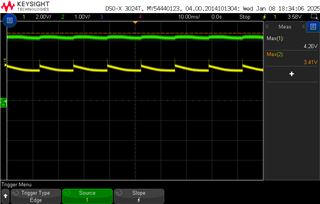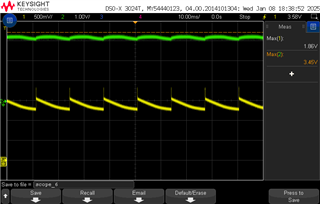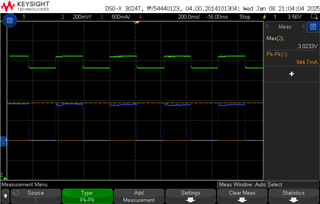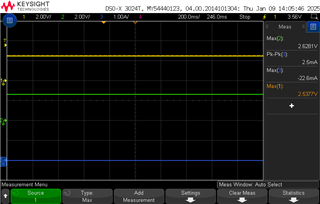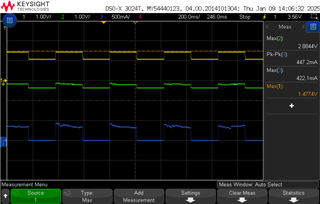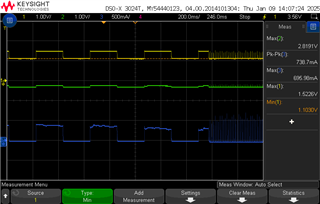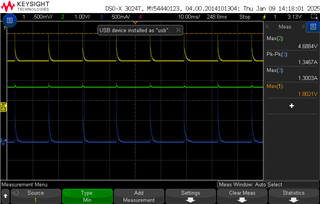Tool/software:
Hi,
I have designed using BQ25820RRVR with the following parameters:
- Vin: 6V to 50V
- Vout: battery only
- Battery: 3.6V LiFePo4 battery
- Charge rate: 1.5A max
- Discharge rate: 8A max
- Switching frequency: 250KHz
- Disable EN_PRECHG
I am currently able to read and write to the I2C register and observe that both ACFET and BATFET toggle ON/OFF, which is also reflected in the I2C register. For reference, I have removed the BATFET, and my battery is directly connected to VSYS. Additionally, based on the I2C readout, the device is not in Hi-Z mode.
With a 12V input applied, I can see that the nPG pin goes LOW, while STAT1 and STAT2 remain HIGH. Despite these conditions, I am unable to enable charging, and the REGN voltage remains at 0.
Could you advise on what I might have overlooked to get the chip to function correctly? Thank you.



